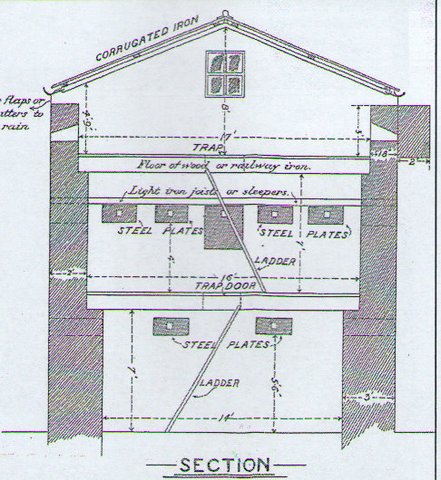A page from the diary of The Dam
The story of the character full house begins at the turn of the 19th
century. Paul Michiel Bester was part of the Voortrekkers and he established
the town Harrismith in the Eastern Free State in South Africa. The town
was proclaimed and Paul became the first magistrate of the town. He then traded and became the owner of the farm called The Dam.
During the Anglo Boer War, Lord Roberts began a policy of farm-burning in the Orange Free State in June 1900. When Boeres were sighted within 20 miles from a Boer homestead, the occupants were given 10 minutes to evacuate their homes with a few belongings before the building were set alight by British forces. The animals destroyed and the homeowners sent to the nearest concentration camp.
Most of the burnings in the Free State were carried out by Colonel Mike Rimington's notorious Colonial Force, The Rimington Guides (Tigers).
Mary Bester (nee |Mandy) and her sister, who were English speaking, sere alone on the farm The Dam, as Mary's husband Paul Michiel, had been captured in September 1900 and were in Tin Town concentration camp in Ladysmith. When Rimington Tigers arrived Mary was asked, "Madam, have you seen any Boers around?" (which they pronounced BOARS, as in males pig). "Yes" she replied, "Down at the pig stay!"
They were give a little time to gather together a few belongs before the house was torched and Mary hid her silver teaspoons in a tin covered with rusks, as the Tigers were known to loot anything of value. As here sister was heavily pregnant Mary asked the soldiers to load a chair onto the wagon which was to take them into Harrismith, which they did. When Mike Rimington saw it, he hurled the chair off the wagon. The two sisters were allowed to travel on to friends in Natal where they spent the rest of the war.
When the family returned to the farm after the war, the chair was still in the garden and was the only thing left of their home.
After the war British government grudgingly voted 3 million pounds towards the restoration of the country. Most of this amount went towards toe restoration of the railways and mines. The Boers received very little of this money and there were usually string attached to their claims.
The tongue in cheek name, Her Majesty's Apology was chosen although queen Victory had died before the war ended and scorched earth policy carried out by Kitchener and Roberts occurred during her reign.
 |
The Dam in days gone by. The Dam was one of the first Hotels in our area.
Look at the beautiful broekie lace that surround the "stoep" |
 |
The lady of the house and her girls are dressed up for the photo shoot. I wonder if they went into town.
Mary Bester in the Dam Hotel taxi. The dominee objected to the name as he said it sounded like a swear word: "the damn hotel".
The stable boy was pulled from the stables every so often, given a pair of white gloves and given the temporary job of watering at the tables.
Look at the hats of the little girls. Sure that they are ready to hit town in the Hotel vehicle. |
 |
In the photo is Paul Michiel Bester the first Magistrate of Harrismith
with his wife and the youngest son.
At the turn of the century, Paul Bester, was the original owner of the farm
The Dam |
When you look out through the windows you can still hear the inhabitants carrying on with live on the farm Life was good at The Dam and the old photo's tell a wonderful story
 |
Dark days was to follow when the Second Boer War break out in 1899.
"Boer" was the common term for Afrikaans-speaking settlers in Southern Africa.
At the time Paul was interned in Ladysmith during the War.
he infamous Remington's Guides attacked his Free State Farm, turning out his family, and burning down the house. |
 |
| The rocking chair standing in the corner was the only piece that survived the fire |
After the war, as an apology, the British Crown rebuilt the Homestead.
The homestead was rebuilt as an apology from Queen Victoria
It is this older wing of the house which has now been renovated for guests, hence the name "Her Majesty's Apology"
We visited Malcolm and Angie Bester in September 2015 on the farm.
They are both artist and has put in a huge effort to promote the artist of the area.
 |
| Malcolm and Angie on the 'stoep' of Her Majesty's Apology |
 |
| What can we say all beautiful |
 |
Then there is the beautiful inside of the house.
The magnificent dining table and buffet was part of Angie's family treasures |
Lets take a stroll around the yard and what is happening out side
 |
| The Dam now known as Her Majesty's Apology and some details |
 |
| The old vine that survived the test of time |
 |
To soon it was time to say good bye.
Hennie and Malcolm having a last chat
Little would we know that Malcolm would pass after our visit
Rest in peace dear friend |
Till next time
Sandra
Thanks to Harrismith Chronicle for supplying some of the information






































